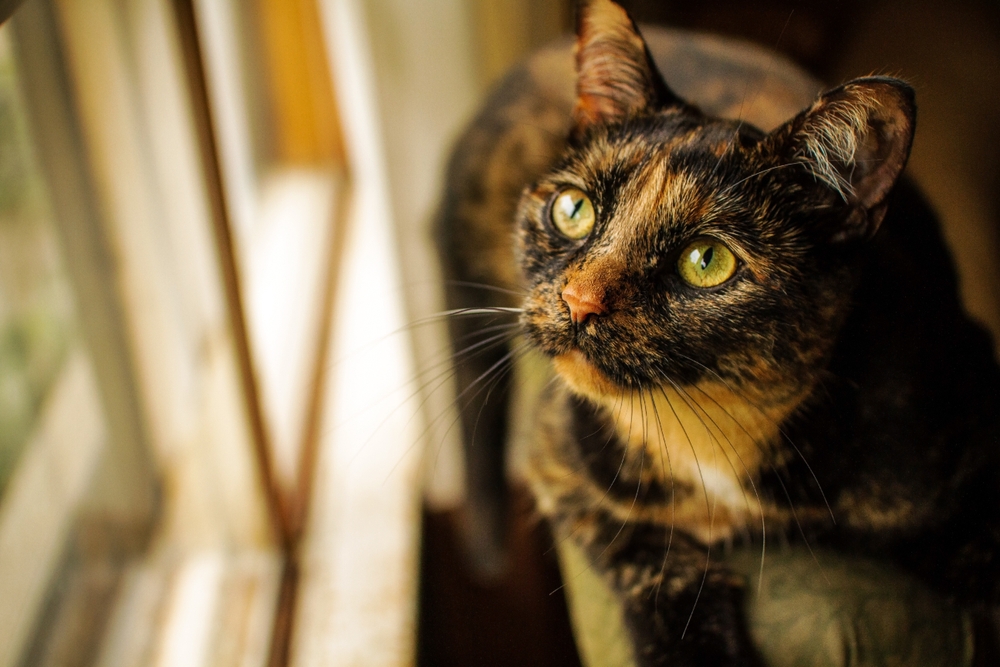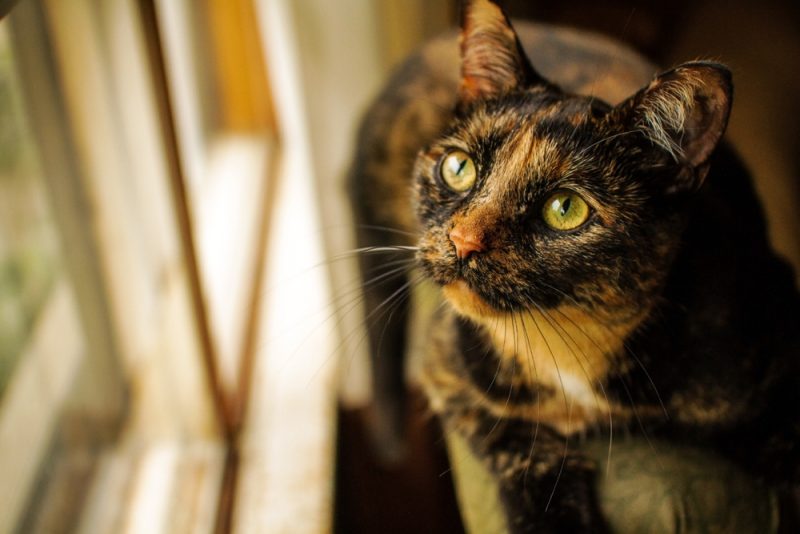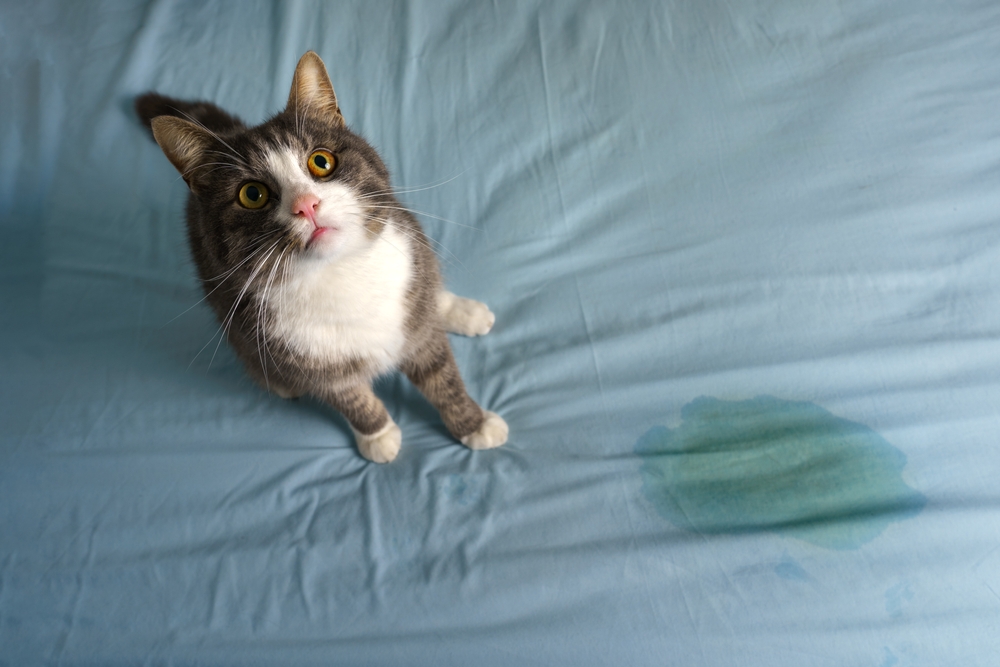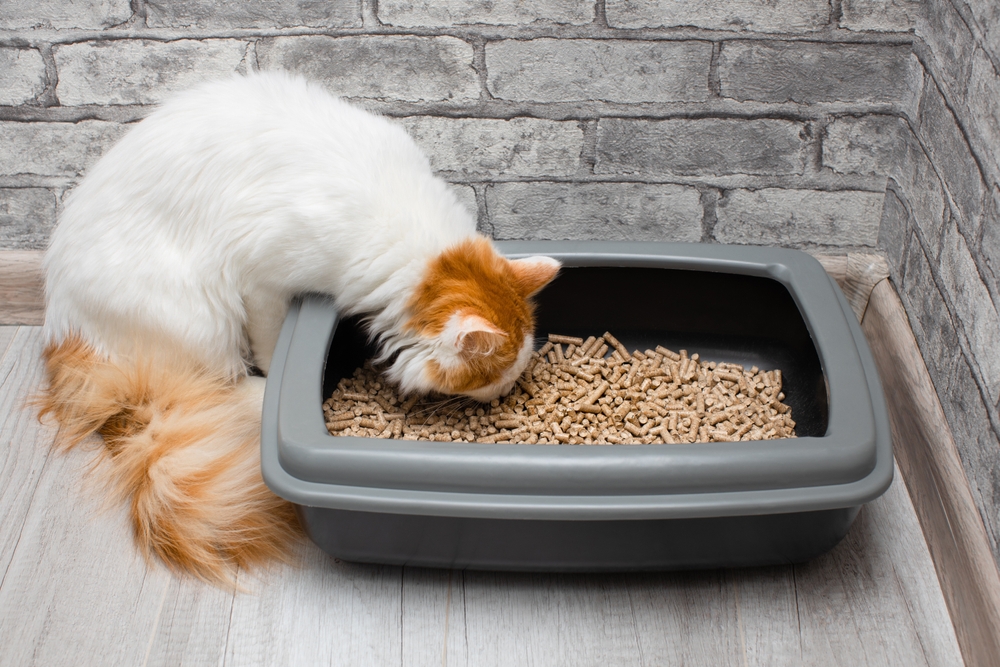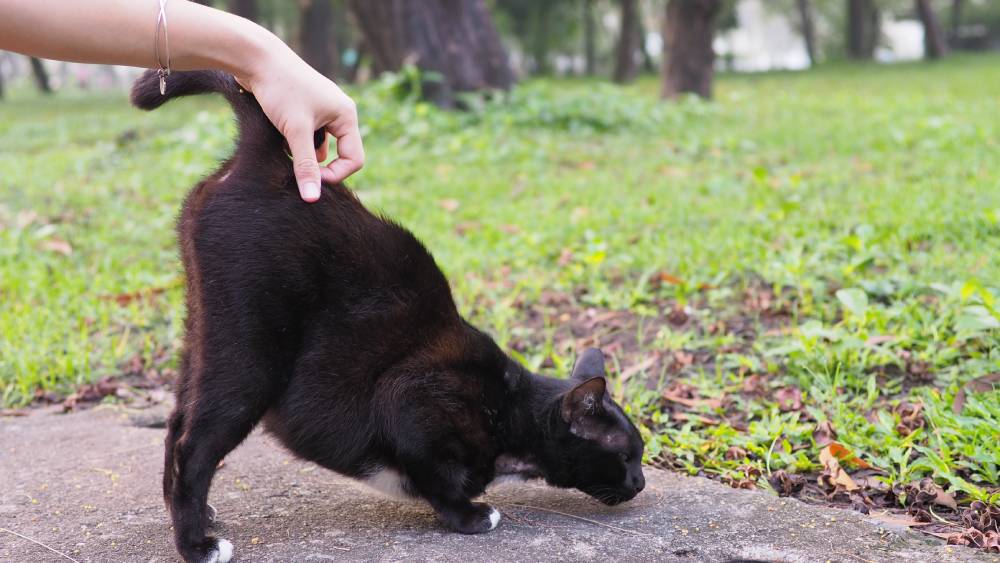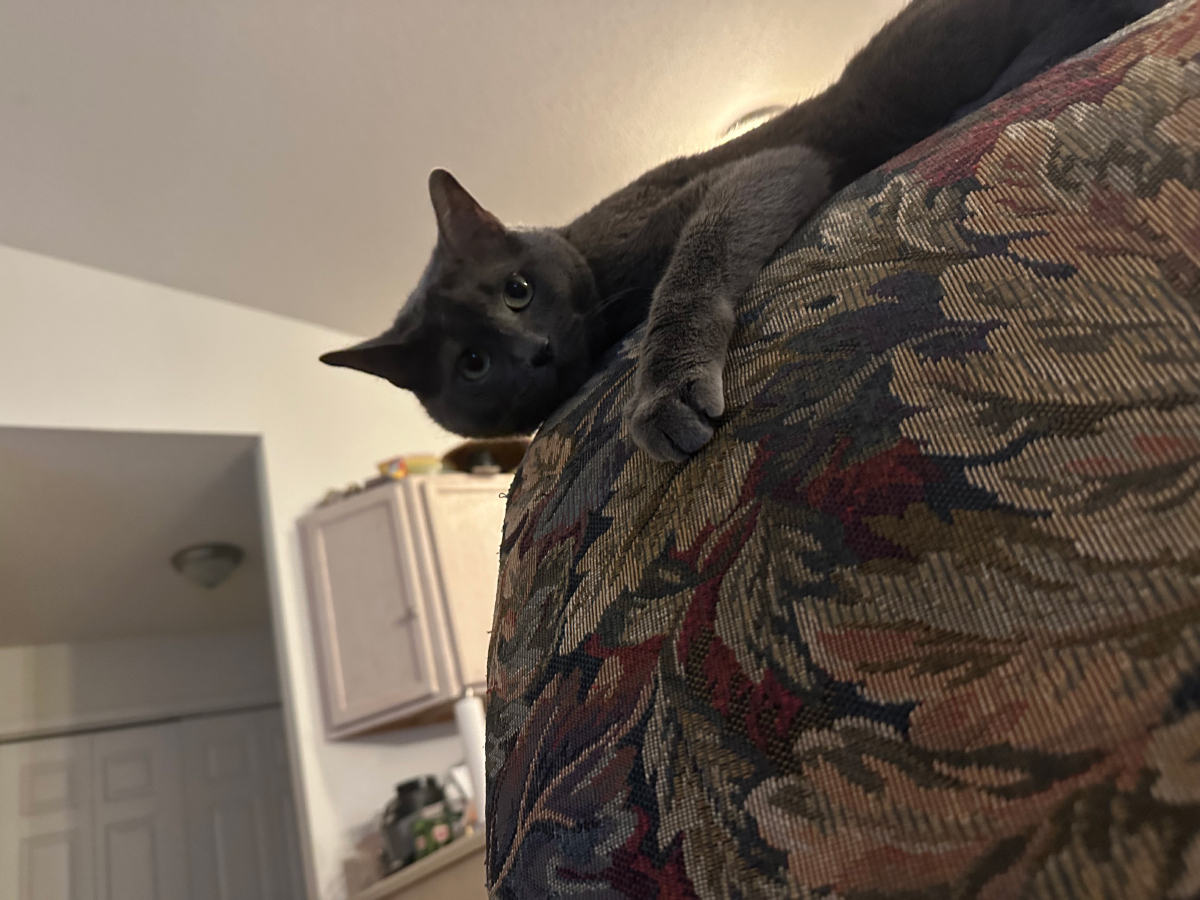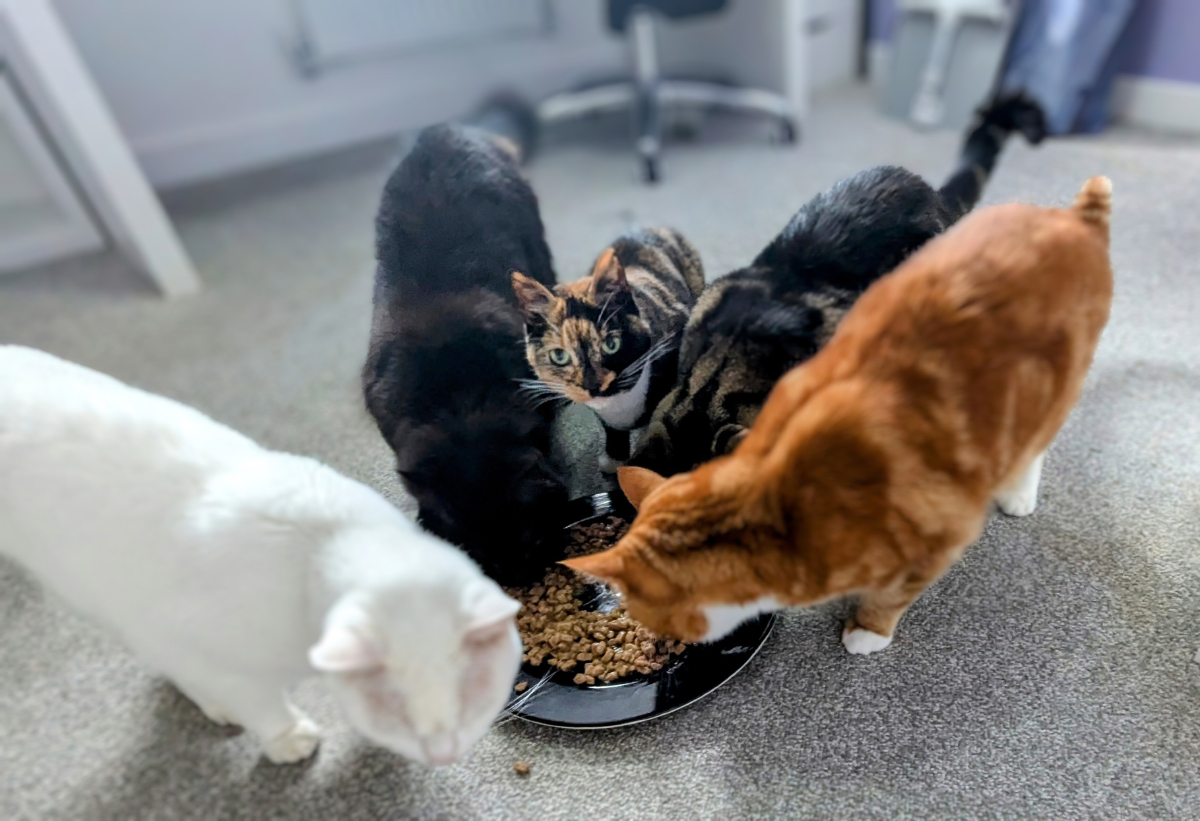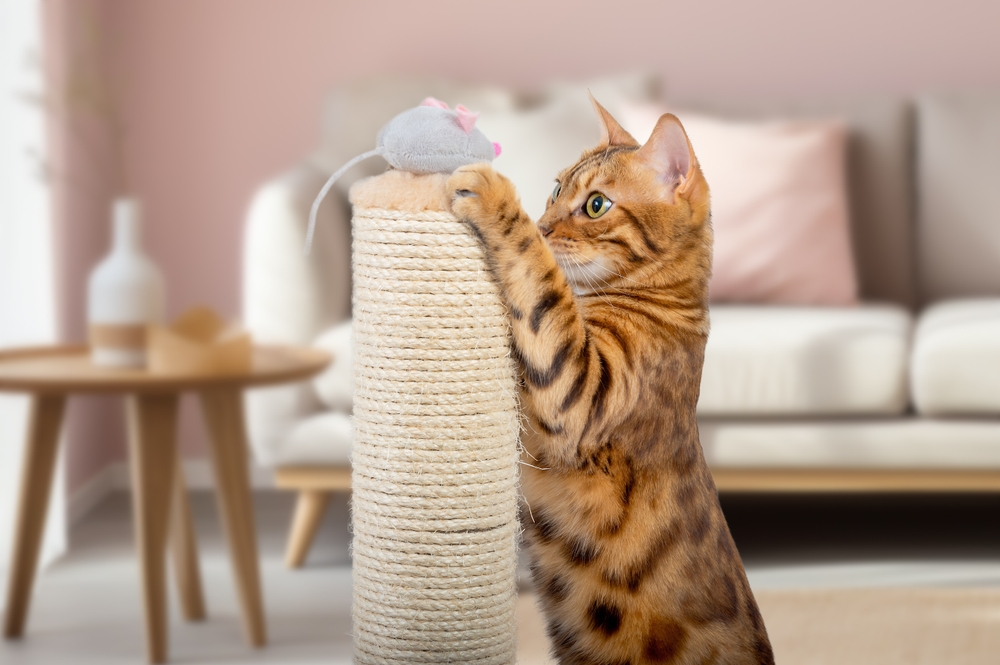Click to Skip Ahead
If you’ve ever watched your cat mesmerized for minutes or longer by a seemingly random object, you’re not alone. Since time immemorial, humans have been fascinated by cat staring. But why do they stare in the first place? The answer is complex, but we can break it down into a few major categories: communication, hunting instinct, curiosity, and attention-seeking. Let’s break those down in more detail, as well as go over some interesting info about how cat eyes are uniquely suited to staring.
How a Cat Communicates With Stares
Communication is a big factor for their staring, with cats staring at objects they seem to enjoy or like and even holding eye contact with their favorite people. The famous half-lidded “kitty kiss” is the most adorable example. In the wild, eye contact almost always means aggression, so take it as a compliment or a sign that your cat loves you when they stare at you. This is how your cat bonds too, making the way you and your cat look at each other more important than you might initially realize.
The good news is that you can analyze your cat’s body language along with their stare to determine exactly what they’re trying to say. Check out some possible meanings of a cat stare right below to decode your cat’s behavior.
- Dominance: A cat staring at another cat is often asserting dominance and resource guarding. In multiple-cat households, such interactions are most commonly observed in narrow areas, such as a narrow hall leading to a staircase. The dominant cat often tries to block the other cat from passing and stares at them if they approach.
- Anger or aggression: A hard, flat stare accompanied by dilated pupils, a puffed-up tail, ears laid back on the skull, and a standoffish posture means the cat feels threatened and may attack.
- Happy and contented: Relaxed body language with a sleepy, half-lidded gaze indicates relaxation and happiness, perhaps accompanied by purring.
- Fearfulness: A scared cat will stare intently while arching their back, tail held low, and accompanied by unpleasant hissing, spitting, or yowling.
- Attention-seeking: If your cat comes up to you, puts their paw on you, snuggles up to your lap, or exhibits other attention-seeking behavior while gazing at you, chances are they want something—food or love are the most likely.
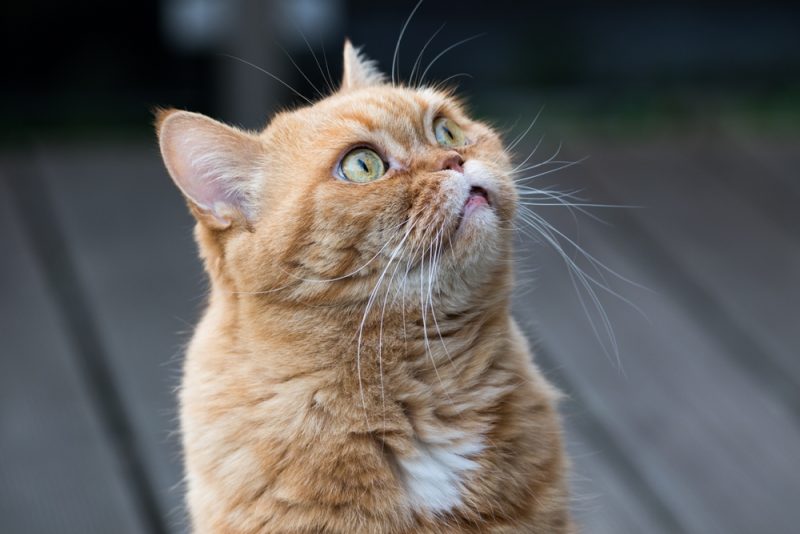
Is Cat Staring Related to Hunting?
Another reason for cats staring is their razor-sharp hunting instinct, meticulously honed through millions of years of evolution. Cats have a binocular field of vision, with a high area of visual overlap between both eyes, a trait shared with many predators. Such a field of vision allows them to properly perceive depth, height, and distance, which are needed to successfully pounce on their prey.
Cats will instinctively lock onto their prey while they ambush. However, this is instinctive and many believe that this isn’t staring, but rather just focus involved with a hunt.
How Are Cat Stares Related to Hunting?
Another reason why cats stare is their razor-sharp hunting instinct, meticulously honed through millions of years of evolution. Cats have three eyelids that work together to keep their eyes lubricated, which helps to stare at prey for long periods before making their move. They’re smart enough to stalk the same areas that their favored prey frequent, too.
By staring, a cat can pick up on minute twitches of a mouse’s tail and the subtle changes in the air that carry information-laden scents and even intimidate cornered prey. The intense, even frightening gaze of a cat on the hunt is truly something to behold. There’s a good reason for that urban myth about cats being able to mesmerize their prey with just their eyes!
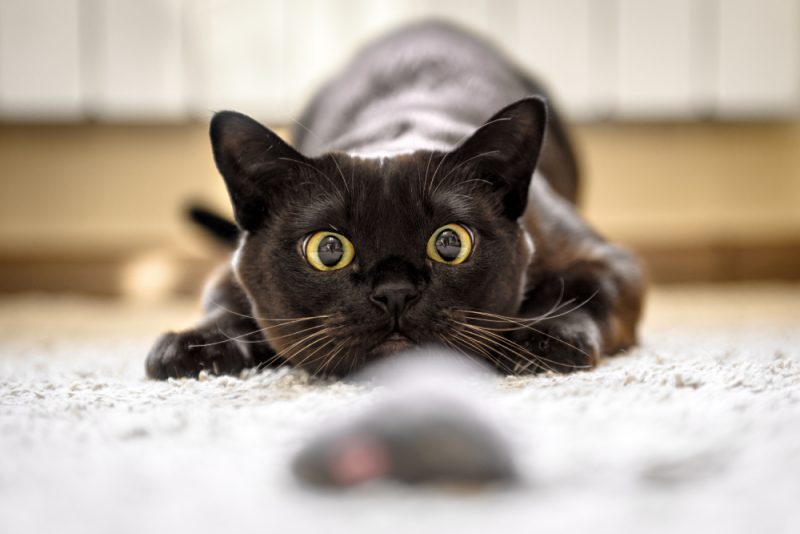
Decoding Cat Staring and Curiosity
Curiosity is yet another major reason your cat stares so much. The world is fresh, new, exciting, and intriguing to their little feline eyes, and they want to take it in as much as possible. They love to stare at moving objects, strange items around your home, and things they can’t quite understand. We’re sure you’ve seen your cat exhibiting this signature feline trait around your home, whether they’re examining wrinkly plastic bags to lie on or hunting a toy that’s lying around.
Cats have more rods in their eyes when compared to humans, and therefore, are able to perceive motion better than us. This is why cats are drawn to and stare at moving or flowing objects almost methodically. It’s also why cat fountains are so popular with cats; the flowing effect of the water is considered to be visually appealing for cats.
Cats can be very curious and particular about many things, including water. The right water fountain can provide your cat with clean, fresh water and keep them visually engaged. A nicely made product like Hepper's Stainless Steel Cat Water Fountain will encourage your cat to stay hydrated and entertained by providing fresh, flowing water.
- Premium 304-Grade Stainless Steel - This metal cat water fountain is hygienic, with superior...
- Serene & Healthy Cat Drinking Fountain Experience - With whisper-quiet pumping & an advanced...
- Say Goodbye to Dehydration - Provide your cat with a constant source of flowing water with this...
This modern, minimalist fountain runs surprisingly quietly and is very easy to clean.
At Catster, we’ve admired Hepper for many years and decided to take a controlling ownership interest so that we could benefit from the outstanding designs of this cool cat company!
Conclusion
The sky is blue and cats stare at stuff; these are just facts of life. Cats love staring, whether they’re satiating their powerful inborn curiosity, entertaining themselves, bonding with you, or pretending to hunt. Learning how to read your cat’s body language along with the type of stare they employ is key to communicating with your cat.
Featured Image Credit: Catherine Anne Thomas, Shutterstock

